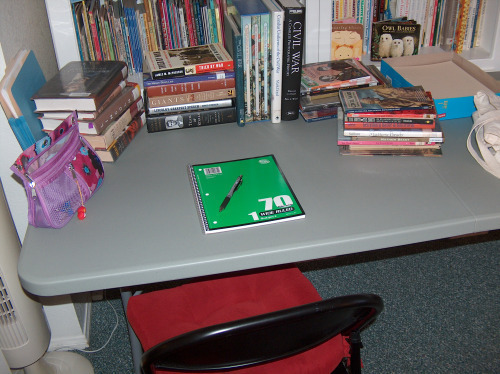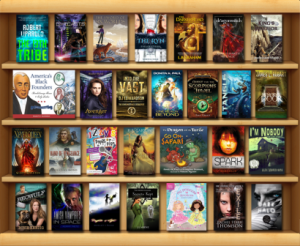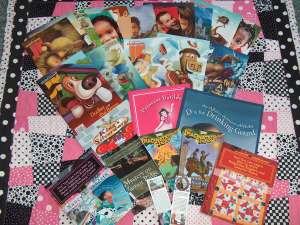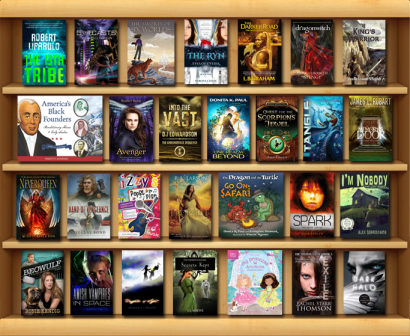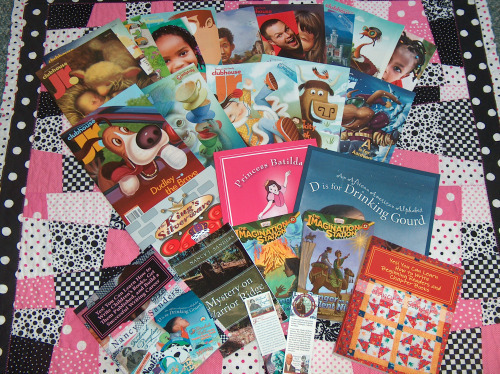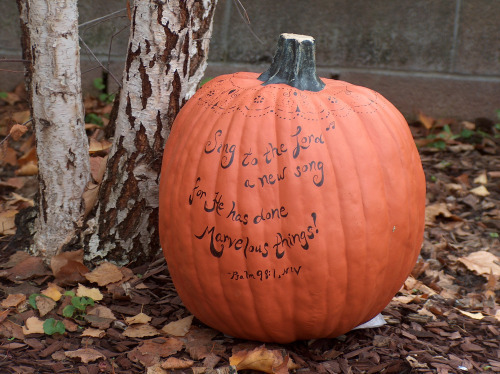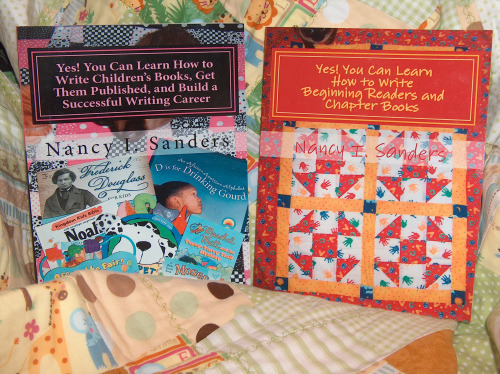Nancy I. Sanders's Blog, page 66
December 20, 2013
Nonfiction Picture Book: Your Research Center
As you’re gathering your research books to use for writing your nonfiction picture book, now you get to do something fun…
Set up your research center!
I love to organize things, so this is a step I always love to do. If you like to organize, you’ll like this, too. If you don’t like to organize and have a hard time finding things once you get started on something, this step will really help you stay focused and on top of things.
I set up an activity table in the room we call the “library.” It used to be our son’s bedroom but after he moved out I claimed it as a guest room (it has a sleeper sofa) and my sewing/craft room. We also put in bookshelves and it’s where I often set up a card table for my research centers for book projects I’m working on. Once the new baby arrives (we recently found out we’re going to be grandparents for the first time!) it will be where we put a crib one of our friends gave to us because their kids have outgrown it. (Can you tell we’re eager to have the new baby come over and visit awhile?!)
Over the years I’ve set up my research center in various places and in various ways to accommodate the season of life I’m in. If you don’t have a place you can set up a card table or activity table right now and need ideas on other ways to set up your own research center, read the section 3.3 Research Center on pages 47-49 in my book, Yes! You Can Learn How to Write Children’s Books, Get Them Published, and Build a Successful Writing Career. And if you want to take a humorous look at how my cat, Humphrey, made his own research center, just visit my site, Writing According to Humphrey and Friends.
And if your house is crazy crowded right now while you celebrate the holidays, but will have an empty corner once the new year starts, just keep all your research sources in one spot for now. You’ll have plenty of time in the new year to set it all out.


December 17, 2013
Nonfiction Picture Book: Gather More Research
Okay…now it’s time to gather MORE research books for your nonfiction picture book that you’re writing. This time around we’ll be looking for scholarly tomes.
This time, look for current nonfiction reliable books for adults on your topic. One way to do this is to go to Amazon.com. Go to search. Type in the name of your topic. Sort by publication date. Look at current titles that seem reliable and are getting good reviews.
Order in from the library 3-5 adult reference books on your topic.
Read at least one of these books this month, more if you want.
If you already have the books for adults that you need on your topic, or if you’re gathering new ones, just double check two things:
1) Check that you have at least one fairly current book with up-to-date research on your topic. This really adds reliability to your project.
2) Check that your books are not too controversial regarding the way they handle your topic or questionable about their research methods. One way to get a feel for this is read a few of the least favorable reviews of your books on Amazon. If a lot of people are offended by your book or blast it for poor research, I recommend looking for another book to use as your research.
Why? Because for one of the children’s books I wrote, I included a book in my list of research sources (the bibliography) that I knew was controversial, but I had read it to see what the “other” side of scholarly research was saying about my topic and therefore listed it in my research list. When my editor was looking for an endorsement for the book, one of our top choices refused to give my book an endorsement because I had included that book in my bibliography. Lesson learned.
Sure, if you’re writing a big scholarly research book, you might want to include controversial sources, but we’re not doing that here. We’re writing a picture book for kids. In the long run, it’s easier not to include controversial sources for your research (unless of course, you’re writing a controversial book for kids!).
So after you look for and find several adult books on your topic, go ahead and purchase 1-2 of these adult reference books to build your personal reference library. (Add these to your Christmas wish list, too!)
If you’re not sure which ones to purchase, wait until you actually start writing the picture book and see which of these books you find yourself gleaning from the most. Those will be the ones you want to keep.


December 11, 2013
Nonfiction Picture Book: Build Your Research Library
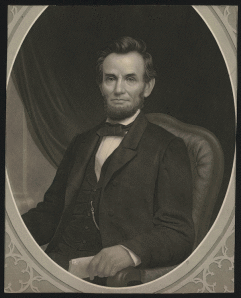
Library of Congress, Rare Book and Special Collections Division, Alfred Whital Stern Collection of Lincolniana.
Welcome back to our nonfiction picture book journey! I know many of you are eager to get back in gear for learning more about the process you can take to write a nonfiction picture book from beginning to end.
If you’re just joining in on my site, you can start the journey at the beginning by visiting my post, Nonfiction Picture Book: Let’s Get Motivated!
And hopefully you’ve had lots of time to go to the library and gather a whole bunch of children’s books on your topic as I suggested in the last post I made about our journey together to write a nonfiction picture book, Nonfiction Picture Book: Gather REsearch Books.
I thought you’d like to know the general topic I picked to write about: Abraham Lincoln. He’s definitely a Top 100 topic that every kid learns about in elementary school. Not only was he one of the Presidents they study when they learn about Presidents, but he was also a central figure in the Civil War that they learn about when they study the Civil War.
So I have a full totebag of children’s library books I checked out that are all about Abraham Lincoln.
I hope you have a full totebag of library books about your topic as well. Plus, I hope you’ve had time to read through a bunch of them and get a good feel for your topic. If not, now’s a good time to catch up.
Here’s the next pre-writing exercise I suggest that you do:
Pick 5-10 of the best of these children’s books to purchase to build your own research library on your topic. Buy these used on Amazon.com, look for them at a library’s used bookstore, or ask for them on your Christmas wish list! You should probably be able to get a good stack for $25 or less. This is well worth that price! But try not to spend much more than that right now…you’ll have more expenses later.
To learn more about WHY I recommend purchasing books to build your own research library and HOW to do this, read Section 3.4 Your Personal Research Library on page 49 in my book Yes! You Can Learn How to Write Children’s Books, Get Them Published, and Build a Successful Writing Career.
So…look over those library books carefully and choose the core children’s books you plan to use for your research. If you’re not sure about how much you’ll need to rely on some of the titles, just make a mental note to examine them more closely as you actually delve more deeply into this writing project. You can always purchase them later.
Or if you feel the books you have don’t really seem strong enough to use as your main research for children’s references, go on Amazon or back to your library’s system to look for other potential books that can be your anchors for your research. Again, 5-10 solid references in children’s books are a good number to start with to purchase for your own research library.


December 8, 2013
32 Author Scavenger Hunt: The Winners!
Thank you, thank you, thank you one and all for joining in on the fun with the 32 Author Scavenger Hunt!
And now for the exciting news…Woot! Woot!
The Grand Prize winner of the iPad Mini and a copy of each author’s book is:
Renee Manning
Second Prize Winner of a copy of each author’s book is:
Chris Morcom
Third Prize Winner of a copy of each author’s book is:
Christa Scott
And the winner of the Book and Magazine Bonanza here on my blog is:
C. Marie!
Congratulations one and all and a very Merry Christmas filled with the blessings of our Lord and Savior, Jesus Christ.
Joy to the World!


December 1, 2013
32 Author Scavenger Hunt Stop #4 – Simonetta Carr Interview
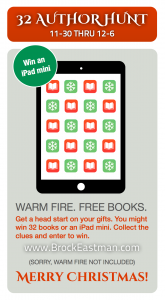
It’s beginning to feel a lot like Christmas!!! Welcome one and all to the exciting #32AuthorScavengerHunt! This is Stop #4 and I’m hosting an interview of the amazing author of Christian history for kids, Simonetta Carr.
Here’s the scoop on how this Scavenger Hunt works. Collect the CLUE on each post, beginning at STOP #1 and ending at the FINAL STOP. Then head on over to fill out the entire clue on THIS SITE.
What are you playing this Scavenger Hunt for? AWESOME (did I mention AMAZING?!) prizes!!! Like a grand prize of an iPad Mini and a copy of every author’s featured book! Second and Third prizes include a copy of every book featured on the hunt, too! Plus, many of the individual sites have awesome giveaways going on, too, (Like this one…see below) so be sure to check out each one! (So sorry, but this contest is only open for US mailing addresses.)
You have oodles of time to visit each author’s site and get to know the faces and hearts behind the voices of your favorite (and soon-to-be-favorite!) Christian authors for kids! Thanks to Karen Whiting for hosting my interview on her site!
The Scavenger Hunt starts Friday, November 29 and ends on Friday, December 6, 2013. That’s a whole week! So put on your favorite Christmas music (Right now, mine is Glory in the Highest by Chris Tomlin) and grab some hot apple cider and a plate of Christmas cookies and enjoy this wonderful journey of all things children’s books! (Well, maybe you shouldn’t eat the WHOLE plate of cookies!!!)
As I shared, I’m hosting an interview of amazing Christian children’s author Simonetta Carr. After you get to know more about Simonetta and her wonderful books, be sure to write down the clue, sign up for my BOOK AND MAGAZINE BONANZA GIVEAWAY, and continue on to the next stop on the hunt. And now here’s Simonetta!!!!
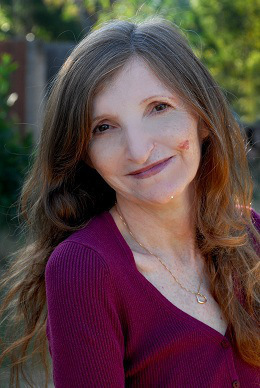
Meet Author Simonetta Carr!
Website: Christian Biographies For Young Readers
Linked In
Twitter: @SimonettaCarr
Facebook Author’s Page: CBFYR
Bio:
Simonetta Carr was born in Italy and has lived and worked in different cultures. A former elementary school teacher, she has home-schooled her eight children for many years. She has written for newspapers and magazines around the world and has translated the works of several Christian authors into Italian. Presently, she lives in San Diego with her husband Thomas and family. She is a member and Sunday School teacher at Christ United Reformed Church.
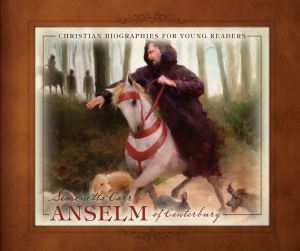
Featured Book
Anselm of Canterbury
Author: Simonetta Carr
Illustrator: Matt Abraxas
Available at your favorite bookstore!
Also at Christianbook.com
Barnes and Noble
Amazon
Interview:
Q: How did you publish your first book?
A: I never thought I would write a book! I always loved writing, but I mostly used my skills to translate other books (from English into Italian, my first language) and write articles about other people. Apart from that, I didn’t think I had anything to say that was worth publishing.
The opportunity to write a book came when, as a home-schooling mother, I noticed a lack of good children’s biographies of Christian thinkers, especially theologians. You can find some of my thoughts on this subject on my blog post, Church History for Children. This recent interview at The Gospel Coalition gives a further explanation at Your Kids Need Christian History, Too.
I would never have found the motivation to write if I had not been so struck by the need for this type of high quality, factual biographies focusing on the history of Christian thought rather than on moral examples.
Q: How do you write? What’s a normal writing day like for you?
A: As you probably know, I have eight children, and even if most of them are grown and living on their own, I am still very busy. Things change all the time, but right now I have four at home – two in high school, one in college, and one just back from the army, so I am still busy cooking, shopping, cleaning, driving the younger kids, and dealing with life in general. I also do translations and teach Italian to supplement our income (or, in the case of Christian translations, to further the gospel message). So writing really takes up only that spare time I can devote to it, which is not much. On the other hand, it is always a joy, and I am very passionate about my projects, so I always make time.
I normally have a few writing projects going at the same time – a new book, some articles, reviews, etc. The book may be at different stages of production. Initially I just do a lot of research. I get piles of books and read about my subject. After a few months of reading, I get so full of the subject that I write the whole book (only about twelve typewritten pages) in a day or two. I write everything I know without caring about form. Later I review each paragraph very slowly. Sometimes I just look at a paragraph and then go back to my household or family chores and ruminate over the same thoughts until I get them right. I do this for the whole book. I also look for photos and write a guideline for the illustrator. In the meantime, I still read more books, and as my understanding of each character and time period increases, I go back and retouch certain portions, much like an artist does with an oil painting.
When I am satisfied with the manuscript, I send it to some experts in the specific field I am covering and wait for their responses. Sometimes they disagree with each other, so I have to engage in a deeper discussion to understand all facets of the situation. I try to have a variety of experts. For my book on Athanasius, I received assistance from a Protestant, a Roman Catholic, and a Greek Orthodox. The experts also help me to finalize the details of the illustrations, especially those related to clothing and architecture.
Q: What are some of the challenges of writing for your audience?
A: Most of my books are for children, who are a delightful and challenging audience. I have increased the challenge by choosing to write about theologians. How do you explain the doctrine of substitutionary atonement in two or three paragraphs? Or the Arian controversy? Right now, as I write about Jonathan Edwards, I am trying to explain deism and Arminianism. I was encouraged when I read that Anselm of Canterbury had a similar struggle (needless to say, on a much higher level) when he wrote his Proslogion. I have worked a lot as a translator, so I see this challenge as translating theological thoughts into a language children can understand. Now you see why I need to ruminate for days…
I faced different challenges when writing for young adults (Weight of a Flame, published by P&R) and for adults (Renée of France, published by Evangelical Press). I call Weight of a Flame a semi-fictional biography, because the main information is historically accurate, but I had to imagine what the characters would have said, how they met, what they wore, etc. I must say this went a little against my grain at first, but I finally just embraced the task and had lots of fun. I think authors must use a different part of the brain when they write fiction. They have to let go of fears and mental rigidity and immerse themselves in the story and the time period by engaging all their senses. They also have to give space to their intuitions and perceptions. They can’t hide behind some comfortable modifiers, such as “probably,” “maybe,” “it seems that,” “some say”… I have a lot of respect for fiction writers.
For Renée of France, the main challenge was finding the information with the little material we have available, but as a biography aimed at an adult audience, I found the task of writing much easier than in the other cases.
Q: In what ways does your faith impact how you approach writing?
A: In light of Luther’s doctrine of vocation, I try to take this job seriously as opportunity to serve others – working hard, setting high standards and striving for quality and accuracy. I keep my goal in mind and try to help children to understand the richness of their Christian heritage and God’s work of preservation of his church throughout the ages.
I also earnestly hope these books will be useful to young readers outside the Christian community. In recent centuries, Christians have created what has been called a “ghetto mentality,” raising walls to protect them and divide them from the rest of their culture. This has prevented many Christians not only from engaging with others at a deeper level and from enjoying and appreciating the artistic and intellectual achievements of all God’s image-bearers, but also from enriching the culture with the distinctive insights their faith and understanding of Christian theology can provide.
For example, Christians can make valuable and unique contributions to the study of history in general. At the end of his book, Lady Jane Grey, A Tudor Mystery, Eric Ives writes, “In the West, growing secularization ensures that relatively few people even understand the issues which meant so much to [Jane].” The fact is, similar issues meant so much to generations of people and, in many cases, much of the past remains unlocked or only superficially investigated.
Q: What will be your next title?
A: The next title is John Knox, the seventh book in my series of Christian Biographies for Young Readers (Reformation Heritage Books). It will be out in February 2014. CLICK HERE to read some endorsements. If you are interested in the artistic process, you can see how the illustrator, Matt Abraxas, finished up one of the images by CLICKING HERE.
THE #31AUTHORSCAVENGERHUNT CLUE!!!
And here’s the CLUE for Stop #4:
OF GIFTS
Next Stop on the Scavenger Hunt for Clue #5 is Simonetta Carr’s very own site. If you want to start at the beginning of the Scavenger Hunt or are ready to enter the full phrase (clue) head on over HERE.
BONUS GIVEAWAY!! BONUS GIVEAWAY!! BONUS GIVEAWAY!!
Sign up for the chance to win these books I’ve written! What a great Christmas gift for kids on your list, your favorite writing buddies…or just for you!
2 bookmarks
2 how-to books for children’s writers
*Yes! You Can Learn How to Write Children’s Books…
*Yes! You Can Learn How to Write Beginning Readers…
3 chapter books
*Mystery on Warrior Ridge
*Imagination Station Series #10: Challenge on the Hill of Fire
*Imagination Station Series #12: Danger on a Silent Night
3 picture books
*The King’s Silverware
*Princess Batilda
*D is for Drinking Gourd: An African American Alphabet
and a whole bunch of Christian kids’ magazines!
Here’s what to do:
Step 1: Sign up to “Follow” my blog and get my occasional e-news via e-mail.
The button is in the sidebar on the right.
(If you’ve already done that before today, just post a comment here to let me know or e-mail me at jeffandnancys@gmail.com.)
Step 2: Click HERE to register on Rafflecopter for the chance to win my BOOK AND MAGAZINE BONANZA.
(Contestants must have a continental US address where prize can be shipped.)


November 30, 2013
32 Author Scavenger Hunt Stop #4 – Simonetta Carr Interview

It’s beginning to feel a lot like Christmas!!! Welcome one and all to the exciting #32AuthorScavengerHunt! This is Stop #4 and I’m hosting an interview of the amazing author of Christian history for kids, Simonetta Carr.
Here’s the scoop on how this Scavenger Hunt works. Collect the CLUE on each post, beginning at STOP #1 and ending at the FINAL STOP. Then head on over to fill out the entire clue on THIS SITE.
What are you playing this Scavenger Hunt for? AWESOME (did I mention AMAZING?!) prizes!!! Like a grand prize of an iPad Mini and a copy of every author’s featured book! Second and Third prizes include a copy of every book featured on the hunt, too! Plus, many of the individual sites have awesome giveaways going on, too, (Like this one…see below) so be sure to check out each one! (So sorry, but this contest is only open for US mailing addresses.)
You have oodles of time to visit each author’s site and get to know the faces and hearts behind the voices of your favorite (and soon-to-be-favorite!) Christian authors for kids! Thanks to Karen Whiting for hosting my interview on her site!
The Scavenger Hunt starts Friday, November 29 and ends on Friday, December 6, 2013. That’s a whole week! So put on your favorite Christmas music (Right now, mine is Glory in the Highest by Chris Tomlin) and grab some hot apple cider and a plate of Christmas cookies and enjoy this wonderful journey of all things children’s books! (Well, maybe you shouldn’t eat the WHOLE plate of cookies!!!)
As I shared, I’m hosting an interview of amazing Christian children’s author Simonetta Carr. After you get to know more about Simonetta and her wonderful books, be sure to write down the clue, sign up for my BOOK AND MAGAZINE BONANZA GIVEAWAY, and continue on to the next stop on the hunt. And now here’s Simonetta!!!!

Meet Author Simonetta Carr!
Website: Christian Biographies For Young Readers
Linked In
Twitter: @SimonettaCarr
Facebook Author’s Page: CBFYR
Bio:
Simonetta Carr was born in Italy and has lived and worked in different cultures. A former elementary school teacher, she has home-schooled her eight children for many years. She has written for newspapers and magazines around the world and has translated the works of several Christian authors into Italian. Presently, she lives in San Diego with her husband Thomas and family. She is a member and Sunday School teacher at Christ United Reformed Church.

Featured Book
Anselm of Canterbury
Author: Simonetta Carr
Illustrator: Matt Abraxas
Available at your favorite bookstore!
Also at Christianbook.com
Barnes and Noble
Amazon
Interview:
Q: How did you publish your first book?
A: I never thought I would write a book! I always loved writing, but I mostly used my skills to translate other books (from English into Italian, my first language) and write articles about other people. Apart from that, I didn’t think I had anything to say that was worth publishing.
The opportunity to write a book came when, as a home-schooling mother, I noticed a lack of good children’s biographies of Christian thinkers, especially theologians. You can find some of my thoughts on this subject on my blog post, Church History for Children. This recent interview at The Gospel Coalition gives a further explanation at Your Kids Need Christian History, Too.
I would never have found the motivation to write if I had not been so struck by the need for this type of high quality, factual biographies focusing on the history of Christian thought rather than on moral examples.
Q: How do you write? What’s a normal writing day like for you?
A: As you probably know, I have eight children, and even if most of them are grown and living on their own, I am still very busy. Things change all the time, but right now I have four at home – two in high school, one in college, and one just back from the army, so I am still busy cooking, shopping, cleaning, driving the younger kids, and dealing with life in general. I also do translations and teach Italian to supplement our income (or, in the case of Christian translations, to further the gospel message). So writing really takes up only that spare time I can devote to it, which is not much. On the other hand, it is always a joy, and I am very passionate about my projects, so I always make time.
I normally have a few writing projects going at the same time – a new book, some articles, reviews, etc. The book may be at different stages of production. Initially I just do a lot of research. I get piles of books and read about my subject. After a few months of reading, I get so full of the subject that I write the whole book (only about twelve typewritten pages) in a day or two. I write everything I know without caring about form. Later I review each paragraph very slowly. Sometimes I just look at a paragraph and then go back to my household or family chores and ruminate over the same thoughts until I get them right. I do this for the whole book. I also look for photos and write a guideline for the illustrator. In the meantime, I still read more books, and as my understanding of each character and time period increases, I go back and retouch certain portions, much like an artist does with an oil painting.
When I am satisfied with the manuscript, I send it to some experts in the specific field I am covering and wait for their responses. Sometimes they disagree with each other, so I have to engage in a deeper discussion to understand all facets of the situation. I try to have a variety of experts. For my book on Athanasius, I received assistance from a Protestant, a Roman Catholic, and a Greek Orthodox. The experts also help me to finalize the details of the illustrations, especially those related to clothing and architecture.
Q: What are some of the challenges of writing for your audience?
A: Most of my books are for children, who are a delightful and challenging audience. I have increased the challenge by choosing to write about theologians. How do you explain the doctrine of substitutionary atonement in two or three paragraphs? Or the Arian controversy? Right now, as I write about Jonathan Edwards, I am trying to explain deism and Arminianism. I was encouraged when I read that Anselm of Canterbury had a similar struggle (needless to say, on a much higher level) when he wrote his Proslogion. I have worked a lot as a translator, so I see this challenge as translating theological thoughts into a language children can understand. Now you see why I need to ruminate for days…
I faced different challenges when writing for young adults (Weight of a Flame, published by P&R) and for adults (Renée of France, published by Evangelical Press). I call Weight of a Flame a semi-fictional biography, because the main information is historically accurate, but I had to imagine what the characters would have said, how they met, what they wore, etc. I must say this went a little against my grain at first, but I finally just embraced the task and had lots of fun. I think authors must use a different part of the brain when they write fiction. They have to let go of fears and mental rigidity and immerse themselves in the story and the time period by engaging all their senses. They also have to give space to their intuitions and perceptions. They can’t hide behind some comfortable modifiers, such as “probably,” “maybe,” “it seems that,” “some say”… I have a lot of respect for fiction writers.
For Renée of France, the main challenge was finding the information with the little material we have available, but as a biography aimed at an adult audience, I found the task of writing much easier than in the other cases.
Q: In what ways does your faith impact how you approach writing?
A: In light of Luther’s doctrine of vocation, I try to take this job seriously as opportunity to serve others – working hard, setting high standards and striving for quality and accuracy. I keep my goal in mind and try to help children to understand the richness of their Christian heritage and God’s work of preservation of his church throughout the ages.
I also earnestly hope these books will be useful to young readers outside the Christian community. In recent centuries, Christians have created what has been called a “ghetto mentality,” raising walls to protect them and divide them from the rest of their culture. This has prevented many Christians not only from engaging with others at a deeper level and from enjoying and appreciating the artistic and intellectual achievements of all God’s image-bearers, but also from enriching the culture with the distinctive insights their faith and understanding of Christian theology can provide.
For example, Christians can make valuable and unique contributions to the study of history in general. At the end of his book, Lady Jane Grey, A Tudor Mystery, Eric Ives writes, “In the West, growing secularization ensures that relatively few people even understand the issues which meant so much to [Jane].” The fact is, similar issues meant so much to generations of people and, in many cases, much of the past remains unlocked or only superficially investigated.
Q: What will be your next title?
A: The next title is John Knox, the seventh book in my series of Christian Biographies for Young Readers (Reformation Heritage Books). It will be out in February 2014. CLICK HERE to read some endorsements. If you are interested in the artistic process, you can see how the illustrator, Matt Abraxas, finished up one of the images by CLICKING HERE.
THE #31AUTHORSCAVENGERHUNT CLUE!!!
And here’s the CLUE for Stop #4:
OF GIFTS
Next Stop on the Scavenger Hunt for Clue #5 is Simonetta Carr’s very own site. If you want to start at the beginning of the Scavenger Hunt or are ready to enter the full phrase (clue) head on over HERE.
BONUS GIVEAWAY!! BONUS GIVEAWAY!! BONUS GIVEAWAY!!
Sign up for the chance to win these books I’ve written! What a great Christmas gift for kids on your list, your favorite writing buddies…or just for you!
2 bookmarks
2 how-to books for children’s writers
*Yes! You Can Learn How to Write Children’s Books…
*Yes! You Can Learn How to Write Beginning Readers…
3 chapter books
*Mystery on Warrior Ridge
*Imagination Station Series #10: Challenge on the Hill of Fire
*Imagination Station Series #12: Danger on a Silent Night
3 picture books
*The King’s Silverware
*Princess Batilda
*D is for Drinking Gourd: An African American Alphabet
and a whole bunch of Christian kids’ magazines!
Here’s what to do:
Step 1: Sign up to “Follow” my blog and get my occasional e-news via e-mail.
The button is in the sidebar on the right.
(If you’ve already done that before today, just post a comment here to let me know or e-mail me at jeffandnancys@gmail.com.)
Step 2: Click HERE to register on Rafflecopter for the chance to win my BOOK AND MAGAZINE BONANZA.
(Contestants must have a continental US address where prize can be shipped.)


November 28, 2013
Happy Thanksgiving!
Sing to the Lord a new song,
for He has done marvelous things.
-Psalm 98:1, NIV
Happy Thanksgiving!
What a wonderful time to gather with family and friends and share in the rich blessings the Lord has given to each of us.
I pray that no matter where you are or what your circumstances are that you will be filled with an overwhelming joy and thankfulness for our amazing God.
If you’re called to be one of God’s scribes and would like devotions to encourage you along your journey, please visit my site Scribes.
And if you’ve never yet met God personally or would like to know more about how to connect with the best friend you could ever have, please CLICK HERE.


November 26, 2013
Nonfiction Picture Book: Gather Research Books
Do you have a library card? I hope so ’cause you’re gonna need it now, even if you didn’t before.
The next step for us to take is to order in 20-30 children’s books on the general topic you choose to write about for your nonfiction picture book.
I can already hear some of you protesting and saying “We’re not supposed to use other children’s books in our research, we’re supposed to use big authoritative reference books!”
Well… it all depends on what we use children’s books for!
Personally, I love to read children’s books on my topic because of a number of fantastic reasons:
1) These books are written in the language kids need to read so it helps me get my brain in gear to write about my topic at their level.
2) These books often include highlights of my topic so I don’t have to wade through long adult books trying to find the golden nuggets myself.
3) These books help me quickly get a good feel for my topic that forms a nice foundation as I’m preparing to launch into serious research.
4) These books help round out my research and can provide solid second and third sources, especially if they’re nonfiction books, too!
5) These books make great resources to list at the back of MY picture book as teacher or student resources, a big plus in today’s picture book market that likes to support the Common Core State Standards.
So go ahead and look for a whole bunch of children’s books on your topic. Go on Amazon and do a search for titles on your topic, Google picture books on your topic, and look at your local library’s online catalog. Then order in a whole pile of children’s books on your topic. I’ll be doing the same.
And start reading. Just read for pleasure! Don’t worry about taking any notes at this point, but if you want to, you can. And if you start getting ideas jumping around in your head, be sure to jot those down!
We’ll be talking again in the days ahead about what to do next. But for the next couple of weeks, just enjoy reading about the fantastic topic you want to write about. And have fun!


November 22, 2013
Welcome to My World: Time + Work = Income
So many of you have purchased one or both of my how-to-books for children’s writers. Thank you so much! Without the enthusiasm and support of our readers, where would we be as authors? We’d all be shut away in obscurity like Emily Dickenson…or worse we’d give up the joy of writing altogether for more gratifying projects.
The main reason I wrote both books was to share with you the strategies that have worked for me. My hope and prayer is that you’ll find nuggets and treasures that will work for you, too, on your own personal journey as a writer.
Recently an online writer friend has been reading my first book, Yes! You Can Learn How to Write Children’s Books, Get Them Published, and Build a Successful Writing Career. She e-mailed me with a question about it, and I thought it was such a great question I wanted to share it here on my blog.
The question in a nutshell was:
How do you make your equation “Time + Work = Income” (Section 1.4: page 29) work for you so you earn a steady income each year?
And here’s the nitty gritty answer:
Every year around this time of year, I plan for my income level that I want to earn in the year ahead. This projected income level is based on two things:
1) New royalty book contracts I sign and write in the year ahead.
2) New work-for-hire book contracts I sign and write in the year ahead.
I don’t include royalties from past books in this equation because, frankly, royalties are unpredictable. I might have a book that sells lousy one year (I think the smallest royalty check I ever received was for seven cents). I might have a book that sells great one year (I think one of my books sold over $50,000 in royalties one year). But there’s simply no way I can predict this.
So I plan for my year ahead and try to line up new book contracts so that the income from advances or work-for-hire flat fees all adds up to $20,000 to $30,000 a year. Any royalties I earn on top of that is icing on the cake.
This means that for the past 15 years or so, I’ve landed contracts to write 4-6 new books each year.
I did this as a beginning writer without an agent and I still do that today. Right now I have 3 books lined up for the year ahead. My agent is still waiting to hear what the advance will be for the one, and when we hear that, I’ll do some more calculating to see how many more contracts I need to line up to meet the income level I want to maintain.
It means I spend a lot of time studying catalogs of book publishers and submitting queries to editors I know as well as editors I’ve never worked with before. I still try to be a Piggyback Writer (see Section 4.2 on page 200 of my book) to break into new markets and I still sign work-for-hire contracts to help pad my yearly income as well as sign royalty contracts with bigger publishers that will bring in income for a few more years.
I wanted to share this with you because I want to encourage you that you CAN earn an income from writing. I do, so I know you can too. Plus, I have writer friends who earn more than I do each year, too! Always remember:
If one can, anyone can.
If two can, you can, too!


November 21, 2013
Nonfiction Picture Book: Choose a Broad Topic
I know many of us are getting ready for the Thanksgiving holiday right now. I am ’cause I’m hosting family and friends at our house this year with over 20 people gathering to celebrate the goodness of God’s blessings. What are your holiday plans?
Next week will be a little quiet here on my blog. And the week after that we’ll be celebrating the #31AuthorHunt all week long where there’s a Grand Prize to win (an iPad mini) and lots of books to win and lots and lots of fun!
So for now I wanted to give you several posts before all that with pre-writing activities you can be doing over the next couple of weeks when you have a few moments to relax and want to enjoy focusing on this journey we’re starting out on together to write a nonfiction picture book from beginning to end.
AFTER you read through America: A Patriotic Primer by Lynne Cheney and AFTER you read through your sample picture book (either one of your choice or the three on American history I recommended in my last post)…
THEN it’s time to choose a general topic.
If you struggle with narrowing down a topic, don’t worry about that right now. Just choose a general topic you want to write about. Something that’s a “Top 100″ in American history, if you’re following along on that path.
Of course, if you already have your narrow topic picked out, you’re good to go right now.
But if you’re still choosing a topic, just pick a general one such as a biography on a famous American like Thomas Jefferson (that’s his house, Monticello, in the picture above from when we visited it a couple of years ago). Or choose a famous event in American history kids in their elementary years learn about such as building the transcontinental railroad. Use Lynne Cheney’s book as a guide. Practically any topic in that picture book would be a good general topic to choose.
And make a mental note: In the future when you’re brainstorming ideas for a new picture book, just get a great book like Lynne Cheney’s book and look for ideas within its pages. There’s no need to reinvent the wheel!


Nancy I. Sanders's Blog
- Nancy I. Sanders's profile
- 76 followers


